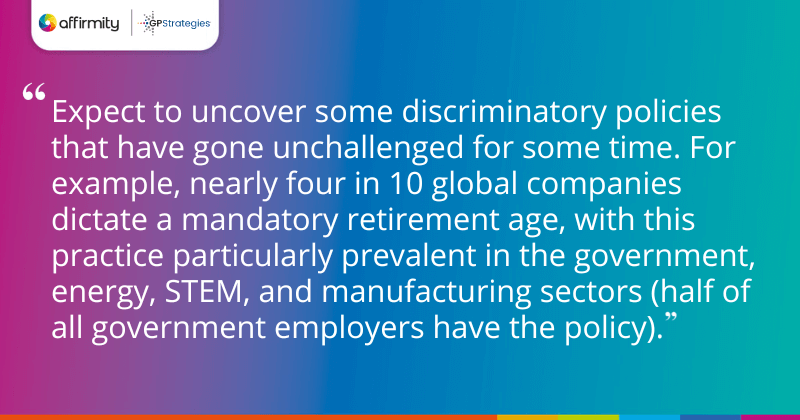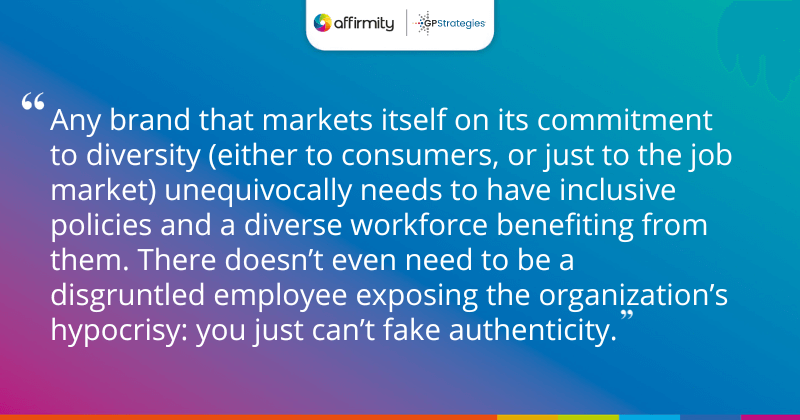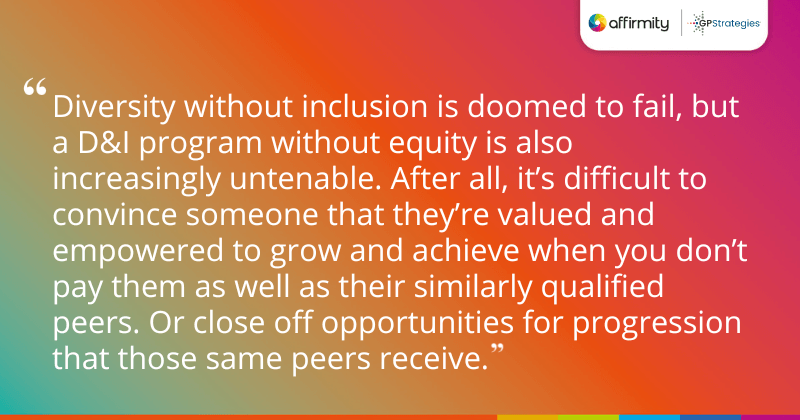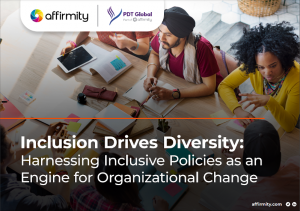How you recruit is unavoidably part of the early story of how inclusive your organization feels, but there are countless potential inclusivity pitfalls along the full length of your employee lifecycle. Read on to discover three crucial steps you should be taking to ensure that you build a demonstrably inclusive, equitable, and diverse workplace that attracts new employees and customers alike.
Step 1) Review Your Hiring and Promotion Practices for Bias

By standardizing and anonymizing your approach to hiring, you can weed out some of your biases. It’s becoming more common to pre-process applications to remove names and demographic indicators. This process, better known as blind recruitment, allows you to better stay focused on the candidate’s education and employment history. By providing a consistent and unbiased hiring, interview, and selection process between candidates, you’re removing an unnecessary element of chance.
The way you advertise your roles is also important. It has been suggested that language choice can attract different kinds of candidates and exclude others. Though a complex area, it’s worth experimenting with more neutral (e.g. less aggressive) word choices if you’re struggling to attract certain groups of candidates.
Expect to uncover some discriminatory policies that have gone unchallenged for some time. For example, nearly four in 10 global companies dictate a mandatory retirement age, with this practice particularly prevalent in the government, energy, STEM, and manufacturing sectors (half of all government employers have the policy).
Alongside your hiring and promotion practices, organizations should periodically review their DE&I policies and particularly consider which characteristics have been left off. Issues like age, socio-economic background, and LGBTQ+ identities may not be enshrined in these policies and their training programs. Naturally, policies need to be enforced to ensure a truly inclusive climate.
DISCOVER MORE ON UNCONSCIOUS BIAS | ‘5 Unconscious Bias Myths and 5 Great Ways to Challenge Them’
Step 2) Diversity and Inclusion as an Engine for Business Success

Research by Deloitte has found a correlation between companies with inclusive cultures being more likely to exceed financial targets, be more innovative and agile, and generally achieve better business outcomes. One of the mechanisms at play is surely that achieving diversity in age, ethnicity, and gender (and maintaining it through inclusion!) helps to attract new markets.
Consumers have long been drawn to businesses that represent their values and reflect their lives. However, just as in the workplace itself, a false veneer of diversity or social justice applied to a brand’s marketing efforts can prove ineffective at best. Brands launching pride product lines have been criticized for using countries with LGBTQ+ hostile policies in their supply chain and commentators queried why brands posting social messages supportive of the Black Lives Matter movement have distinctly white leadership teams.
Inclusion’s role here is particularly interesting. Any brand that markets itself on its commitment to diversity (either to consumers, or just to the job market) unequivocally needs to have inclusive policies and a diverse workforce benefiting from them. There doesn’t even need to be a disgruntled employee exposing the organization’s hypocrisy: you just can’t fake authenticity.
Writing in Forbes on the subject of diversity marketing, marketer Edward Bourelly summarizes the issue: “You have to embrace the notion and true value of being a diverse and inclusive company from within before you can lead with it in your messaging. Otherwise you’re “just putting lipstick on a pig.”
HAVE YOU ALSO SEEN? | ‘Driving DE&I: Where to Begin and How to Impact Real Change [Q&A]’
Step 3) Don’t Neglect Pay Equity

Diversity without inclusion is doomed to fail, but a D&I program without equity is also increasingly untenable. After all, it’s difficult to convince someone that they’re valued and empowered to grow and achieve when you don’t pay them as well as their similarly qualified peers. Or close off opportunities for progression that those same peers receive.
It was easier for organizations to dodge this responsibility in the past. Laws enshrining the principle of non-discriminatory pay have existed in many countries for decades. However, we’ve only recently started to see laws that guarantee regular scrutiny of large amounts of this information:
- In the EU, the 2014 recommendation on pay transparency declared that employees should have the right to request pay information, and that employers should be regularly reporting it. Various member states have since implemented reporting schemes.
- In the US, California and Illinois have passed bills requiring all businesses over a certain size to report pay on gender, race, and ethnicity lines. Similar bills are expected to emerge from other states in the near future.
Even before this context is considered, the case for incorporating pay equity analysis into the talent lifecycle of a company was already strong. The scale of the problem may have once seemed prohibitive. However, the fact is that the data, technology, and services necessary to monitor, and correct unfair pay practices are all within the grasp of today’s businesses.
Annual reporting laws reflect the fact that businesses should be able to monitor this information on at least a yearly basis. Your solution should enable you to easily analyze different types of compensation at different points in the year. This approach can help you understand the causes of pay difference, and take corrective action—rather than waiting to root issues out whenever reporting season rolls around.
FOR MORE ON EQUITY, READ OUR WHITE PAPER | ‘Cultivating Fair Pay in the Workplace: Your Guide to Global Pay Equity’
Inclusion Drives Diversity—Keep Reading!
These three steps for maintaining your inclusive and equitable reputation come from a larger exploration of how such practices are essential to maintaining your diversity efforts—our latest ebook, “Inclusion Drives Diversity: Harnessing Inclusive Policies as an Engine for Organizational Change”. Download the full guide and keep reading analysis from our experts on:
- The business case for inclusion, including examples of the impact of its absence
- How to measure and reiterate upon the gains that inclusion brings
- The link between inclusion, retention, and diversity
- Multigenerational and multicultural inclusion tactics to drive inclusivity
- And more!
Download the full guide today.

